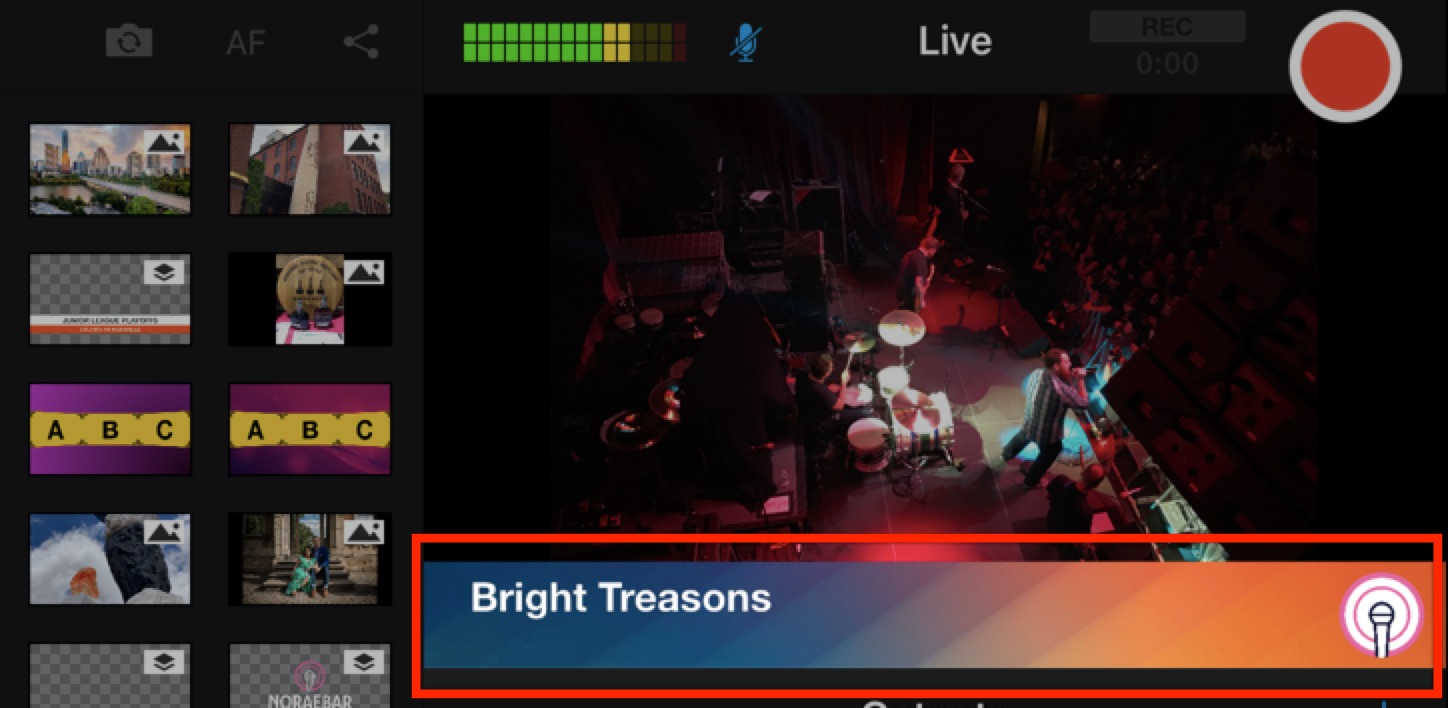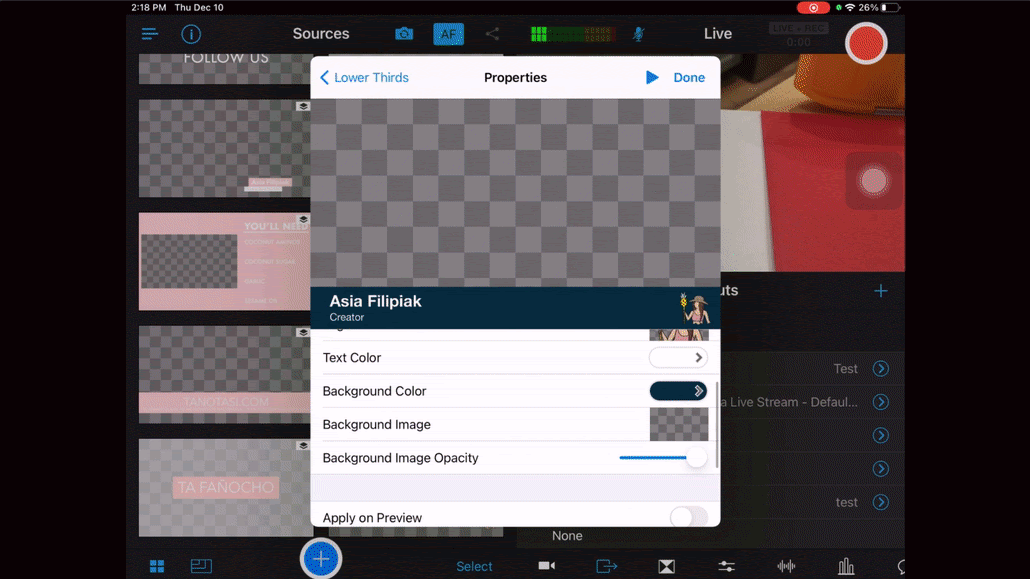Customizing Asset Backgrounds
Some Multi-view templates and overlay assets allow you to customize the background, including setting the color, adding a gradient, and adding a background image.
Multi-view with a Background Image

Lower Third with a Background Image

Jump to:
Setting a Background Color
If an asset allows you to customize the background color, you'll see the option in the Properties window when editing a template or existing asset. To change the color, tap the color with the right arrow.

The Background Color Properties window includes two color swatches:
The swatch on the left is the current background color.
The swatch on the right is the new background color.

There are four way to set the color:
Hex/CSS Code
Palette color picker
RGB sliders
Swatches
Hex/CSS Color Code
To use a 6-digit Hex/CSS color code to set the background color:
Tap the top right box.
In the modal window that appears, delete the existing code.
Type in the code for the color you want to use.
Tap OK.
The color swatch on the right will show the color for the code you entered. Tap Multi-view Properties in the left to finish customizing the asset. Tap Done to save all changes.
Palette Color Picker
The Palette Color is the default tab in the Background Color Property window. To select a color from the Palette tab:
Tap and drag anywhere in the canvas to change the color.
Use the slider on the right to adjust the brightness.

As you make changes, the color swatch in the top right will show the new color. Tap Multi-view Properties in the left to finish customizing the asset. Tap Done to save all changes.
RGB Sliders
To select a color using the RGB sliders:
Tap the RGB tab at the top.
Use each of the sliders to select your color.
As you make changes, the color swatch in the top right will show the new color. Tap Multi-view Properties in the left to finish customizing the asset. Tap Done to save all changes.
Swatches
To select a color using the Swatches options:
Tap the Swatches tab at the top.
Tap a color swatch to select it.

As you tap an option, the color swatch in the top right will show the new color. Tap Multi-view Properties in the left to finish customizing the asset. Tap Done to save all changes.
Note: If an asset has options for a Background Color and a Background Image, Switcher will use the Background Image settings. You will need to remove the Background Image if you want to use the Background Color instead.
Adding a Background Image
If an asset allows you to customize the background with an image, you'll see the option in the Properties window when editing a template or existing asset.

To select or change the image:
Tap Background Image
Tap the source for your own image file (e.g. Photo Library, Switcher Cloud, etc.), or choose Backgrounds to select from several built-in options.
Tap the background image you want to use.
Finish customizing the asset properties and tap Done.

To remove a Background Image:
Tap Background Image
Scroll to the bottom of the list.
Tap No Image.
Note: If an asset has options for a Background Color and a Background Image, Switcher will use the Background Image settings. You will need to remove the Background Image if you want to use the Background Color instead.
Adding a Background Gradient
If an asset allows you to add a gradient to the background, you'll see an option in the Properties window called Background Image.

To select a gradient:
Tap Background Image.
Tap Gradient.
Tap the color swatch next to Main Color and use the color tools to select a color.
Tap < Gradient in the top left corner.
Drag the Nuance slider to adjust the strength of the gradient.
Drag the Brightness slider to adjust brightness.
Tap an Orientation option to select which corner the light comes from for the gradient.
Tap Done to save the gradient settings and finish customizing the asset template.
Setting a gradient on a Multi-view

Setting a gradient on a Lower Third
